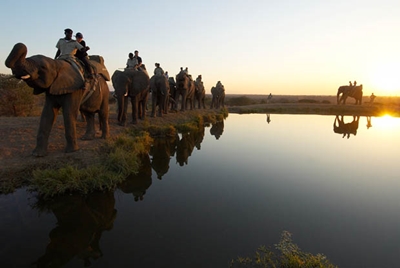 Why do people go on safari? To see the wildlife of course.
Why do people go on safari? To see the wildlife of course.
But things are changing in Africa. The sad reality is, that unless we act together the Big Five may well be a thing of the past.
If any of you watched the Martin Clunes documentary on Friday night, about Mugie the lion, you’ll have heard the shocking statistics about the threat to lions in the wild – less than 32,000 lions remain in the wild and Africa has lost between 30 and 50% of its lions in the last twenty years alone.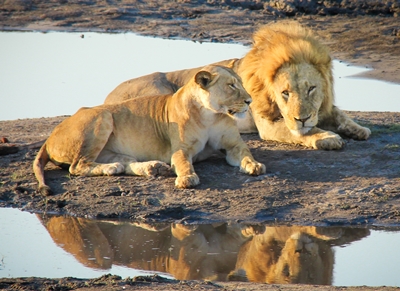
If you follow our Facebook page you’ll know how passionate we are about anti-poaching campaigns, along with our support of the Sheldrick Wildlife Trust elephant orphanage in Nairobi, Kenya via the Real Africa Trust.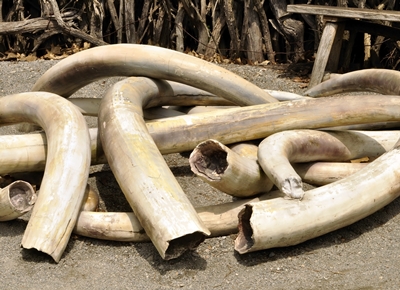
The bottom line is that our wildlife and habitats need safeguarding for the future and tourism plays a major role in this.
Increasingly now, as part of the safari experience, you can witness first hand ‘modern conservation’ in action. Modern conservation is the term given to describe the delicate relationship between wildlife, tourism and conservation. This experience can add a whole new and fulfilling dimension to your safari.
The team here at Real Africa have hand-picked some very special fly-in modules which transport guests to largely remote areas of Africa, at the forefront of the modern conservation movement. Here you can combine the thrill of Big Five safari while staying in luxury at a beautiful lodge or camp, with visits to uplifting community or conservation projects, research centres or programmes. This adds a fantastic extra dimension and in our opinion a real African experience.
By staying at such lodges who work together with conservation trusts you are helping directly and giving something back. The continuing success of these projects undeniably hold the key to the future of safari.
For us, the following camps and lodges really shine when it comes to community and conservation.
To find out more and to see detailed sample itineraries please click here.
Zimbabwe – Singita Pamushana fly-in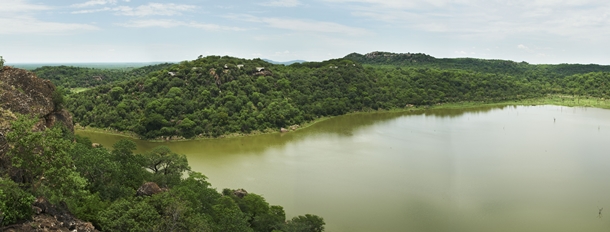
- 3 nights at Singita Pamushana in the remote and exceedingly beautiful far reaches of Malilangwe Wildlife Reserve
Highlights
- Seeing black and white rhino, many of which have been re-introduced to the park as part of Singita’s comprehensive programme of conservation and community action – you can also track rhino with a ranger
- Dining under the lantern lit ancient baobab canopy
- Cruising at sunset on the dam below the lodge
- Jaw dropping location and stylish private suites with infinity pools including family suites
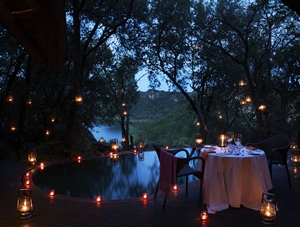
About Singita Pamushana
The lodge is the ecotourism arm of the not-for-profit Malilangwe Trust, and its role is to help foster the sustainability of the wildlife and broader ecology, while enabling guests to share the magic of the lodge and the 130,000 acre wildlife reserve. Guests can visit projects, such as the Child Supplementary Feeding Programme, initiated by Singita Pamushana in partnership with the Trust, following the acute drought of 2002.
19.000 children, most under five, benefit daily from the programme. Guests can also learn about the rhino re-introduction programme which has been a great success with black and white rhino thriving in the reserve.
During your stay you are likely to spot a great variety of wildlife including species such as black rhino, white rhino, Lichtenstein hartebeest, sable, nyala, klipspringer, cheetah, wild dog, lion, leopard and an abundance of bird life.
Kenya – Samburu Singing Wells and the Mara Fly-in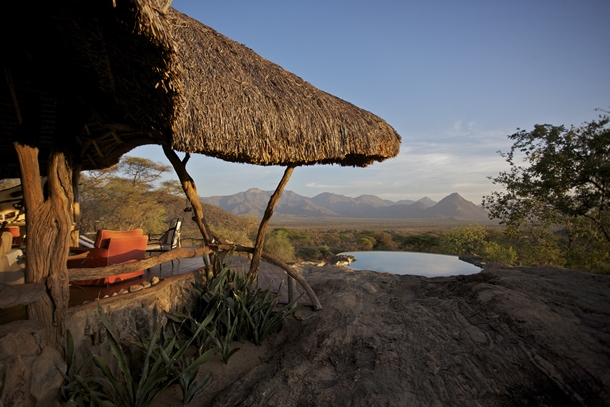
- Combines 2 nights at Sarara Lodge in the dramatic Mathews Range, Northern Kenya with 3 nights at Kicheche Valley Camp in the Masai Mara. The Namunyak Wildlife Conservation Trust, which works in partnership with Sarara Camp, is widely recognised as one of the most successful community and conservation projects in Africa.
Highlights
- Sunrise visit to the Sarara Singing Well where the local Samburu tribespeople come to water their cattle. The Samburu warriors form a human chain to bring water up from the well, chanting as they do so
- The views and the tranquility
- Watching wildlife from the hide by the watering hole and looking for leopard on game drives
- Spending time with the Samburu guides

Tanzania – Singita Serengeti fly-in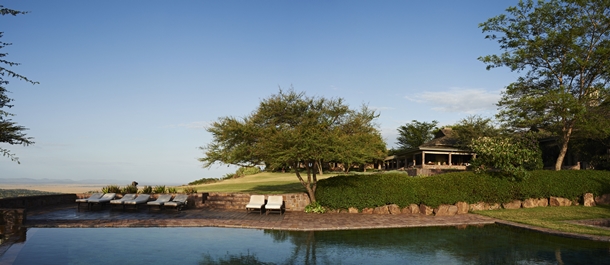
3 nights in a private luxury cottage at Singita Sasakwa, in the Grumeti region of the Serengeti, protected by the Grumeti Community and Wildlife Conservation Fund.
Highlights
- Serengeti wildlife
- Meeting students from the Environmental Educational Centre, dedicated to educating local young people about the Serengeti Ecosystem and the importance of conservation
- Wonderful private cottages with infinity pools which ooze classic 1920s style
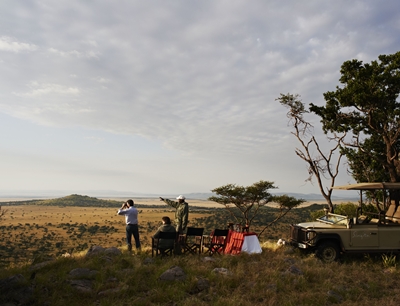
South Africa – Cape Town Tswalu Kalahari fly-in
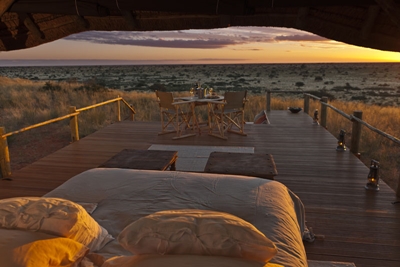 Combines 4 nights at the stunning Cape Grace on Cape Town’s colourful V&A Waterfront with 4 nights at Tswalu Kalahari, where you have the chance to see the desert black rhino, black maned lion and San Bushmen carvings and to see the wonderful work of the Tswalu Foundation.
Combines 4 nights at the stunning Cape Grace on Cape Town’s colourful V&A Waterfront with 4 nights at Tswalu Kalahari, where you have the chance to see the desert black rhino, black maned lion and San Bushmen carvings and to see the wonderful work of the Tswalu Foundation.
Highlights
- Tswalu’s new Malori sleep-out deck experience where guests, including families, are invited to sleep out under the stars surrounded by the majesty of the Kalahari. The Malori deck is a raised platform with thatched overhang, complete with luxurious king sized bed (and camp beds for children) and lantern-lit outdoor bathroom
- Meeting the meerkats
- Seeing the Kalahari’s famously powerful black maned lions
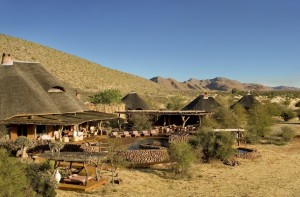
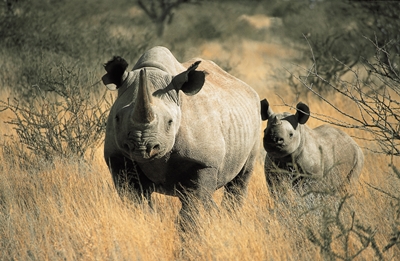 In addition there are a number of incredible activities to enjoy such as a sunrise visit to the meerkat colonies, enjoying sundowners on the dunes or even spending a morning tracking Desert Black Rhino.
In addition there are a number of incredible activities to enjoy such as a sunrise visit to the meerkat colonies, enjoying sundowners on the dunes or even spending a morning tracking Desert Black Rhino.South Africa – Camp Jabulani fly-in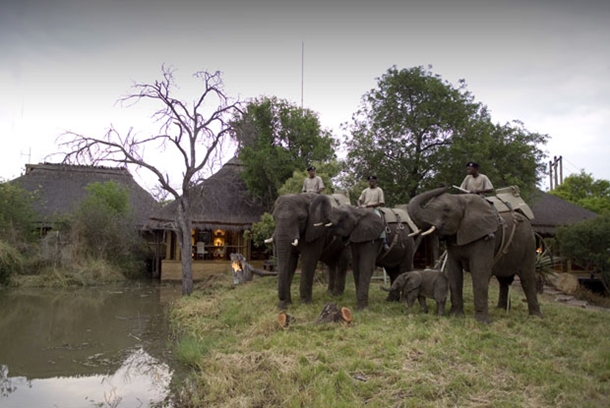
- 3 nights at Camp Jabulani, situated within a Big 5 reserve near to Kruger National Park and the only camp to offer elephant back safaris other than Camp Abu Botswana. Staff aim to ‘indulge, spoil, pamper and entertain guests, but most importantly, to share with them the story and the experience of the elephants.’
Highlights
- Interacting with the camp’s herd of elephant and learning about how they came to be there; you can watch them swim and take a night time elephant back safari
- Visiting the Hoedspruit Endangered Species Centre (HESC)
- Being pampered!
About Camp Jabulani
Camp Jabulani was born after the rescue of a single elephant. Now there is a herd, all rescued and rehabilitated and living a good life. Guests are able to interact with the herd at much closer proximity than would be usual on safari, personally bonding with this incredible animals. In turn guests then spread the word about wildlife conservation. It’s a formula that is really working here.
Not only can guests try out an elephant back safari, by night, but also enjoy game viewing in 4x4s within the Kapama Game Reserve which lies in close proximity to Kruger and has a great density and variety of wildlife. There are only six suites – all very luxurious and also a Therapy Lapa for spa treatments.
The HESC is a leading light in private research and breeding facilities for endangered species in the country. There is a cheetah breeding programme and animal hospital and guests can visit the facility during their stay giving a valuable insight into conservation.
By Sara White